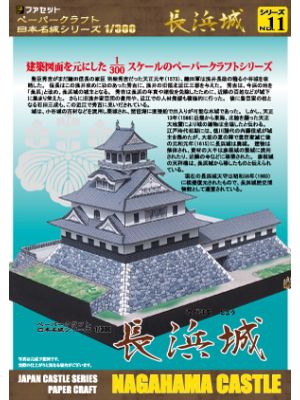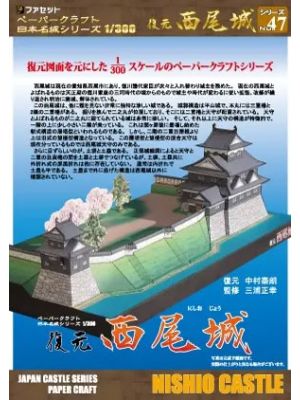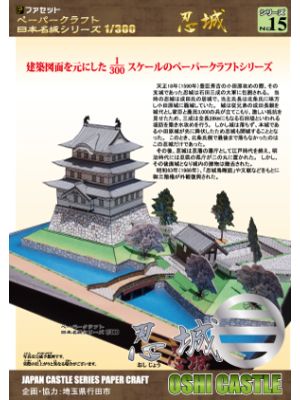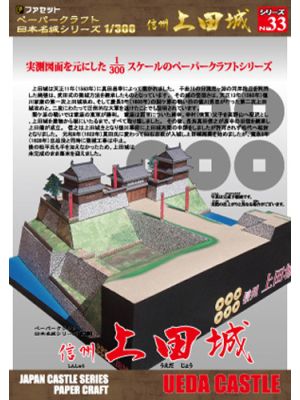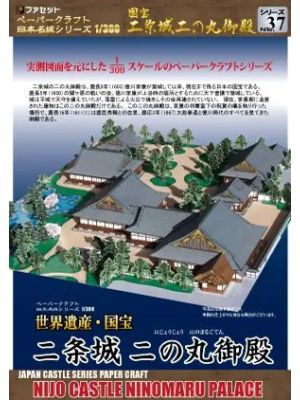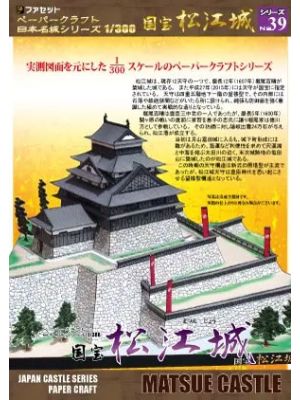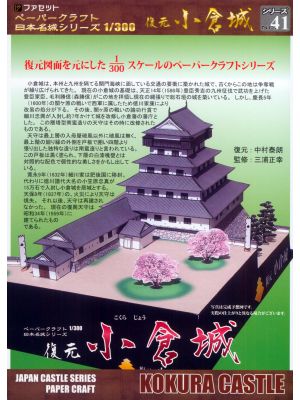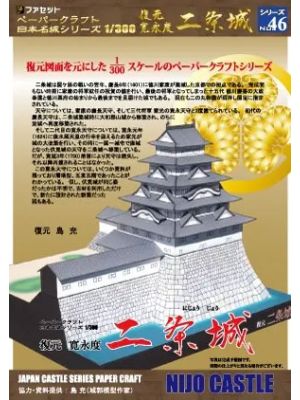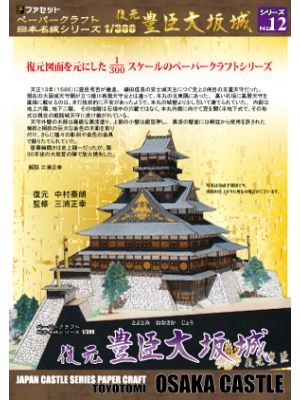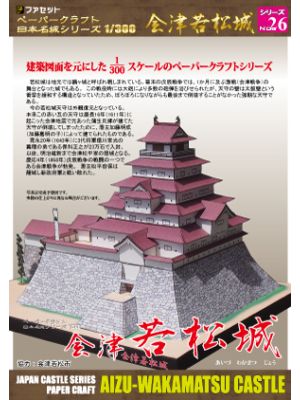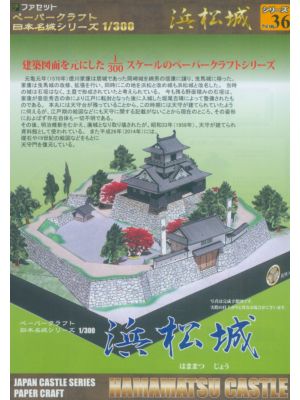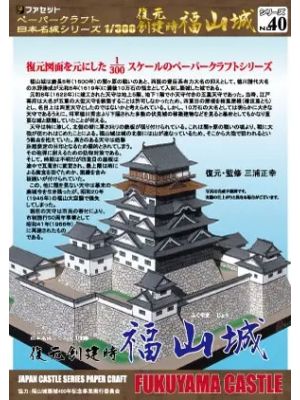Hamamatsu Castle
Scale: 1/300
Skill Level: medium
Size (LxWxH): 293x265x76 mm (11x10x2 inch)
Hamamatsu Castle was built shortly before Azuchi Castle, which was groundbreaking for later fortress architecture in Japan. Hamamatsu was originally constructed primarily from wood and clay. This lovingly crafted model depicts this original state very well and is particularly interesting when compared to the stone castles that were built afterward.
| Product type | Papermodel |
|---|---|
| Manufacturer | Facet |
| Scale | 1/300 |
| Designer | Shigeru Ishihara |
| Difficulty | medium |
| Sheet size | DIN A4 |
| Sheets | 10 |
| Length | 293 mm (11.54 inch) |
| Width | 265 mm (10.43 inch) |
| Height | 76 mm (2.99 inch) |
| Bauanleitung | Japanese, Pictures |
Following the defeat of Imagawa Yoshimoto by Oda Nobunaga in the Battle of Okehazama in 1560, Tokugawa Ieyasu gained independence from the Imagawa clan. Ieyasu entered Okazaki Castle, using it as his base to expand his territory into Mikawa and Totomi. However, to prepare for the next threat, Takeda Shingen, he handed Okazaki Castle over to his eldest son, Nobuyasu, in 1570 and moved his main stronghold to Hikuma Castle. Ieyasu renovated and expanded Hikuma Castle, renaming it Hamamatsu Castle, which became the first Hamamatsu Castle during his reign.
The current Hamamatsu Castle features a replica castle tower and is surrounded by stone walls. These stone walls were added during the tenure of Horio Yoshiharu, who later became the lord of Hamamatsu Castle. When the original Hamamatsu Castle was built, there were no tiled roof castle towers or high stone walls; buildings were generally constructed with earthworks and wooden planks. Azuchi Castle, which would later have a significant influence on castle architecture, was built six years later in 1576.
Hamamatsu Castle from Ieyasu's time has been faithfully recreated based on a restoration plan researched by Hiroshima University Professor Emeritus Masayuki Miura, an architectural researcher for the NHK Taiga drama 'What Will Ieyasu Do?'. The restoration reflects the era and castle-building techniques of that time.


 Deutsch
Deutsch





